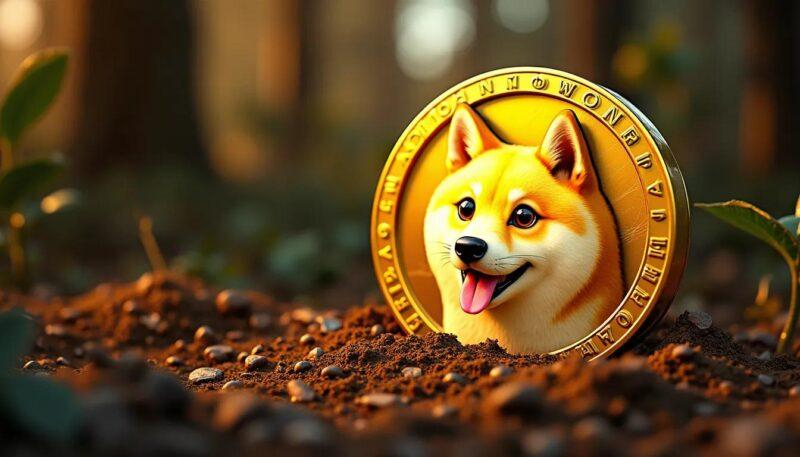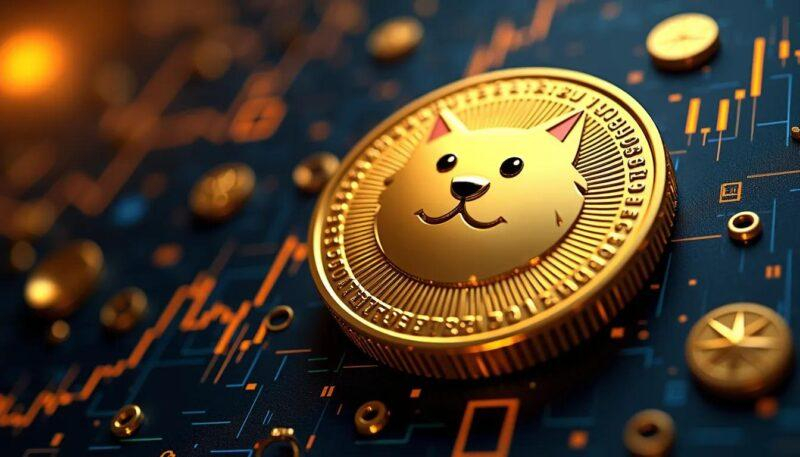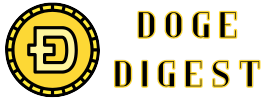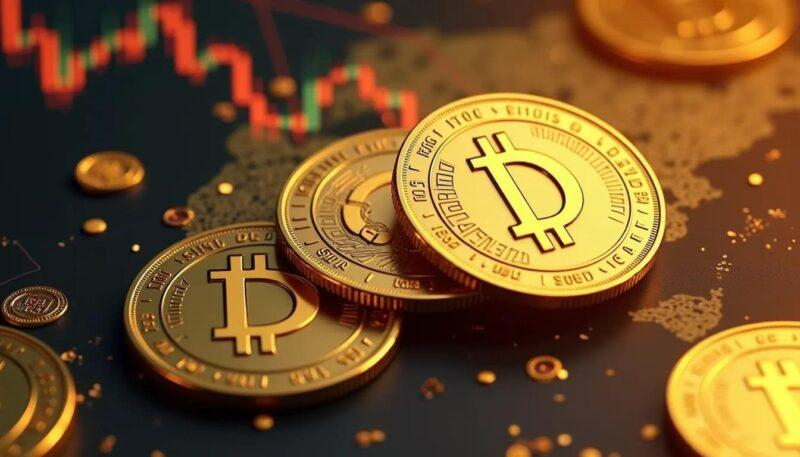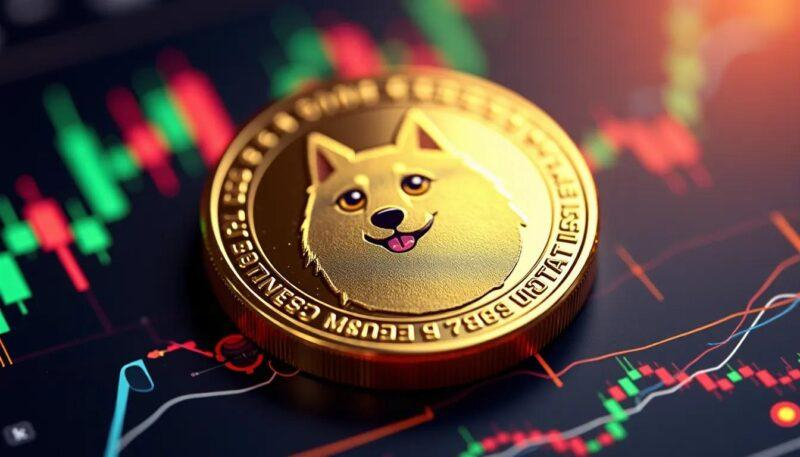In a world where financial inequality often draws stark lines between opportunity and access, unconventional solutions are increasingly coming into focus. Among these, Dogecoin-a cryptocurrency that began as a lighthearted internet meme-has evolved into a surprising player in the realm of global finance. What started as a joke has found real traction in communities often overlooked by traditional banking systems, hinting at a future where digital currencies might help bridge the chasms of economic disparity. This article explores Dogecoin’s unexpected journey and its emerging role in connecting the financially underserved across the globe.
Understanding Dogecoin’s Unique Appeal in Emerging Markets
Dogecoin’s rise in emerging markets is hardly a coincidence. Its accessible design and enthusiastic community foster a sense of inclusivity that many traditional financial systems lack. Unlike complex cryptocurrencies that require technical know-how, Dogecoin’s simplicity lowers the entry barriers, enabling users in regions with limited banking infrastructure to participate in the digital economy easily. This grassroots appeal is fueling a new wave of financial empowerment, where digital assets become a lifeline beyond borders.
Another compelling aspect lies in Dogecoin’s transaction speed and low fees. In countries where international remittances often incur steep charges and delays, Dogecoin offers a practical alternative. Small businesses and freelancers benefit enormously by avoiding excessive intermediaries, making cross-border payments faster and more affordable. This efficiency not only promotes economic participation but also nurtures trust in decentralized financial tools as credible instruments for everyday commerce.
Consider the following snapshot illustrating Dogecoin’s appeal relative to other digital currencies in key emerging markets:
| Feature | Dogecoin | Bitcoin | Ethereum |
|---|---|---|---|
| Transaction Fees | Low | Medium to High | High |
| Transaction Speed | 1-3 minutes | 10-60 minutes | 5-15 minutes |
| User Accessibility | Simple & Friendly | Technical | Technical |
| Community Engagement | Vibrant & Supportive | Varied | Professional |
- Microtransactions: Dogecoin excels in enabling tiny payments for goods and services.
- Remittances: It bridges the gap between migrant workers and their families seamlessly.
- Digital Inclusion: Empowers the unbanked population through straightforward adoption.
How Dogecoin Facilitates Cross-Border Transactions with Low Fees
With its roots in community-driven enthusiasm and efficiency, Dogecoin has emerged as a practical solution for sending money internationally without the burdensome costs that traditional banking networks impose. Its low transaction fees make it especially appealing in regions where remittance services typically extract high percentages from transferred amounts, helping more money actually reach its intended recipients.
Unlike conventional cross-border payment systems, Dogecoin operates on a decentralized blockchain that eliminates the need for intermediaries. This means users can bypass multiple banks and agencies, significantly reducing processing times and expenses. The network’s ability to confirm transactions quickly is a critical advantage, enabling near-instant transfers that are accessible to anyone with an internet connection.
- Minimal fees typically under a penny per transaction
- Fast confirmation times averaging around one minute
- Global accessibility without dependence on local banking infrastructure
To better illustrate Dogecoin’s cost-effectiveness and speed, consider the following comparison with traditional wire transfers:
| Transfer Method | Typical Fee | Average Time |
|---|---|---|
| Dogecoin | $0.01 – $0.05 | ~1 minute |
| Bank Wire Transfer | $15 – $50 | 1 – 5 days |
The Impact of Dogecoin on Financial Inclusion for the Unbanked
In many parts of the world where traditional banking systems are either inaccessible or prohibitively expensive, Dogecoin has emerged as a surprising yet powerful tool for financial empowerment. Its low transaction fees and fast confirmation times make it an attractive alternative for individuals who have been excluded from the global financial ecosystem. By leveraging simple mobile technology, people in remote or underserved areas can send, receive, and store value without the need for a conventional bank account.
The decentralized nature of Dogecoin eliminates the need for intermediaries, reducing barriers to entry and democratizing access to digital finance. Communities can now partake in global commerce, microtransactions, and crowdfunding efforts with minimal overhead. This fosters economic participation by enabling:
- Cross-border remittances with near-zero fees
- Instant peer-to-peer transfers without intermediaries
- Access to global marketplaces despite local banking restrictions
| Feature | Benefit for the Unbanked |
|---|---|
| Low transaction fees | Affordable access to digital payments |
| Decentralized network | No gatekeepers or account restrictions |
| Mobile-friendly wallets | Easier financial participation anywhere |
| Fast confirmation times | Immediate access to funds and transfers |
Addressing Regulatory Challenges to Maximize Dogecoin’s Potential
Emerging cryptocurrencies like Dogecoin face a labyrinth of regulatory complexities that can impact their widespread adoption. Navigating these regulations requires a delicate balance between ensuring compliance and preserving the decentralized essence that makes Dogecoin unique. Governments around the world vary in their approach-some allowing flexible frameworks for innovation, while others impose stringent rules to mitigate risks such as fraud or money laundering.
Key regulatory hurdles include:
- Unclear classification of cryptocurrencies as securities or commodities
- Cross-border taxation and reporting requirements
- Money transmission licensing and KYC/AML mandates
Addressing these challenges demands a collaborative effort from developers, financial institutions, and policymakers. By fostering transparent communication and advocating for proportionate regulations, Dogecoin can continue to expand as a cost-efficient, accessible form of value transfer-especially in underserved regions. Strategic regulatory clarity will empower users and businesses alike to confidently integrate Dogecoin into everyday financial ecosystems.
| Region | Regulatory Stance | Impact on Dogecoin |
|---|---|---|
| North America | Moderate, evolving frameworks | Encourages institutional adoption |
| Europe | Strict AML/KYC regulations | Higher compliance costs |
| Asia | Varied, from crypto-friendly to restrictive | Creates market fragmentation |
| Africa | Nascent regulatory environment | Potential hub for financial inclusion |
Strategic Recommendations for Integrating Dogecoin into Global Finance Systems
To harness Dogecoin’s full potential in the global financial arena, institutions should prioritize interoperability standards that enable seamless transactions across diverse blockchain networks. Developing cross-chain bridges and adopting universal API protocols will facilitate integration with existing banking systems and fintech platforms, encouraging widespread adoption. Encouraging collaboration between Dogecoin developers and traditional financial stakeholders will create a robust ecosystem where transparency and efficiency coexist.
Policy frameworks must be adaptive yet secure, enabling regulators to monitor activities without stifling innovation. Implementing tiered compliance models tailored specifically for microtransactions and remittances, where Dogecoin excels, can unlock financial inclusion in underserved regions. Such frameworks should emphasize:
- Privacy safeguards respecting user rights
- AML/KYC mechanisms adapted for decentralized models
- Incentives for eco-friendly mining to ensure sustainability
| Strategic Focus | Expected Outcome | Key Stakeholders |
|---|---|---|
| Interoperability Protocols | Frictionless global transactions | Blockchain Developers, Banks |
| Adaptive Compliance Models | Balanced security and innovation | Regulators, Fintech Firms |
| Incentivized Sustainability | Environmentally responsible growth | Miners, Environmental Groups |
Q&A
Q&A: Dogecoin’s Role in Bridging Global Financial Gaps
Q1: What is Dogecoin, and how did it begin?
A1: Dogecoin is a cryptocurrency that started as a lighthearted, meme-inspired digital currency featuring the Shiba Inu dog from the “Doge” meme. Launched in 2013 by software engineers Billy Markus and Jackson Palmer, it was intended to be a fun, more approachable alternative to Bitcoin-embracing community and accessibility over serious financial ambition.
Q2: How can a meme-based coin play a part in addressing global financial gaps?
A2: Despite its playful origins, Dogecoin’s low transaction fees and fast processing times make it surprisingly practical for microtransactions and remittances. These features can lower barriers for unbanked or underbanked populations who often face costly, slow transfers when sending money across borders.
Q3: In what ways does Dogecoin facilitate financial inclusion?
A3: Dogecoin’s wide accessibility-requiring only internet access and a digital wallet-makes it easier for people in developing regions to participate in global commerce. Its strong, active community also fosters peer-to-peer support and education, helping newcomers understand and trust cryptocurrency as a tool for everyday transactions.
Q4: What distinguishes Dogecoin from other cryptocurrencies in bridging financial divides?
A4: Unlike some cryptocurrencies that focus on complex technology or speculative investment, Dogecoin’s simplicity and vibrant community culture encourage mass adoption. It doesn’t demand hefty mining fees or high entry barriers, making it more adaptable for real-world use cases in regions where traditional banking is limited.
Q5: Are there challenges or limitations to Dogecoin’s impact on global finance?
A5: Definitely. Dogecoin’s value volatility and absence of a formal governance structure can create uncertainties. Furthermore, regulatory hurdles and digital literacy gaps in some countries still pose significant obstacles to widespread adoption, meaning its role is part of a bigger, ongoing effort rather than a standalone solution.
Q6: How do experts see Dogecoin evolving in the context of reducing financial inequality?
A6: Many experts view Dogecoin as a valuable experiment-showing how community-driven cryptocurrencies might democratize finance. While it may not singlehandedly close financial gaps, it highlights the importance of ease of use, affordability, and inclusivity, which future digital currencies and platforms can build upon.
Q7: Can Dogecoin influence traditional financial systems or policies?
A7: To some extent, yes. Dogecoin-and cryptocurrencies like it-push traditional financial institutions to innovate and consider more inclusive, decentralized alternatives. As awareness grows, regulators and banks may explore integrating such digital assets into their frameworks, potentially improving cross-border payment systems and financial accessibility.
Q8: What role does community play in Dogecoin’s mission to bridge financial gaps?
A8: Community is at the heart of Dogecoin’s identity. From grassroots fundraising campaigns to spreading crypto education, its global network of supporters embodies a grassroots approach to finance-demonstrating that financial empowerment can be a collective, inclusive endeavor rather than a corporate or governmental monopoly.
Through a blend of technology, culture, and community, Dogecoin illustrates a unique chapter in cryptocurrency’s journey toward making the global financial landscape more accessible-reminding us that sometimes, big change comes with a wagging tail and a smile.
Insights and Conclusions
As Dogecoin continues to carve its unconventional path through the world of finance, its true legacy may well lie beyond mere market numbers. More than just a cryptocurrency born from internet culture, Dogecoin embodies a growing movement toward inclusivity and accessibility in global finance. While challenges remain, its ability to transcend borders and invite everyday users into the digital economy hints at a future where financial gaps shrink-not through complexity, but through community and innovation. In the evolving story of money, Dogecoin stands as a reminder that sometimes, change begins with a simple, unexpected spark.

